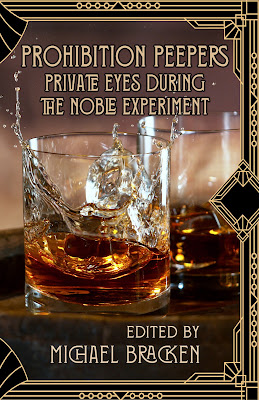— Nathan Ward, from "Elmore Leonard's Gritty Westerns," in Crime Reads
It's certainly never a bad idea to follow the writing advice of the great Elmore Leonard. His Ten Rules For Writing are rightly famous as terrific advice for any writer of fiction.
 |
| The Great Elmore Leonard |
In those instances where Leonard's advice isn't readily available, it never hurts to follow his example, if at all possible. Take the one in the quote above from Nathan Ward's Crime Reads article on Leonard. For years Leonard apparently leaned heavily on the content of Arizona Highways magazine.
It's a fine notion. Now, don't get me wrong: it's always better to travel. There is no substitute for actually going to and spending time in the place you're writing about. But, if you're writing about someplace and you can't afford to go, read travel writers. For that matter, even if you can afford the investment in both time and treasure to visit the region where your work is set, read travel writers. No one can help you get a feel for a certain place like people who make their livings helping their readers get a feel for a certain place.
Take William Dalrymple. The British-born-and-raised son of a Scottish baronet, Dalrymple these days is best known for his recent run of riveting books on the history of the subcontinent: India, Pakistan and Afghanistan. Dalrymple is a terrific writer and a first-rate historian who splits his time between a farm just outside Delhi, in India and a summer home in London.
 |
| William Dalrymple |
And there is so much to this memoir which can be of use to the writer reading about the city. Here's an early excerpt laying out his introduction to Delhi and to India:
I was only seventeen. After ten years at school in a remote valley in the moors of North Yorkshire, I had quite suddenly found myself in India, in Delhi. From the very beginning I was mesmerized by the great capital, so totally unlike anything I had ever seen before. Delhi, it seemed at first, was full of riches and horrors: it was a labyrinth, a city of palaces, an open gutter, filtered light through a filigree lattice, a landscape of domes, an anarchy, a press of people, a choke of fumes, a whiff of spices. Moreover the city—so I soon discovered—possessed a bottomless seam of stories: tales receding far beyond history, deep into the cavernous chambers of myth and legend. Friends would moan about the touts on Janpath and head off to the beaches in Goa, but for me Delhi always exerted a stronger spell. I lingered on, and soon found a job in a home for destitutes in the far north of the city. The nuns gave me a room overlooking a municipal rubbish dump. In the morning I would look out to see the sad regiment of rag-pickers trawling the stinking berms of refuse; overhead, under a copper sky, vultures circled the thermals forming patterns like fragments of glass in a kaleidoscope. In the afternoons, after I had swept the compound and the inmates were safely asleep, I used to slip out and explore. I would take a rickshaw into the innards of the Old City and pass through the narrowing funnel of gullies and lanes, alleys and cul de sacs, feeling the houses close in around me.
Now, I ask you. Can this guy set a scene, or what? Really helpful for drinking in the flavors, colors, scents and sounds of what on the face of it comes across as a truly unforgettable place. Really not a bad guide if you're interested in writing about modern-day India.
But what if, like me, you're a writer of historical fiction?
In Leonard's case, as stated above, he exploited a modern magazine to help give him local flavor not just for another region of the country, but for that region in another era. No mean feat. It's a testament to Leonard's talent, coupled with his singular vision that he was able to "world build" (to borrow a phrase from our friends who write speculative fiction) using these building blocks for his foundation.
So sure, you can (and should) definitely use your imagination to fill in the cracks. There is certainly no substitute for imagination in the fiction writer's tool kit. That said, you need more than one tool in order to get the job of writing fiction done. I've often felt like our "tool kit" as fiction writers should be more aptly called a "tool warehouse." And of course, another way to use travel writing as one of those tools, to help get the feel for a city or street, or region or state or county or what-have-you during a bygone time is to go and find travel writing from the time in which your work-in-progress is set.
I have a writer friend whose current work-in-progress is set during World War II. One of his major characters has a back-story in which he lived in Germany during the 1930s, in the run-up to the war. I referred him to A Time of Gifts: On Foot to Constantinople: From the Hook of Holland to the Middle Danube, the first volume in a superb three-volume memoir of a trip on foot across Europe, from Holland all the way to Turkey by travel writer, war-time British commando (the account of his part in a successful kidnapping of a German general in Crete is not to be missed), bon vivant, and (some say) one of Ian Fleming's models for his literary creation James Bond, Patrick Leigh Fermor.
Leigh Fermor set out for Constantinople (Istanbul) in December of 1933, less than a year after Adolf Hitler and the Nazis had come to power. His narrative is replete with rich details about German life during that period, laying out how the Nazis had both a heavy and in some ways, a negligible impact on the country they would eventually drive to absolute ruin. Here is Leigh Fermor's initial impression of Cologne, the first major German city he visited:
After a first faraway glimpse, the two famous steeples grew taller and taller as the miles that separated us fell away. At last they commanded the cloudy plain as the spires of a cathedral should, vanishing when the outskirts of the city interposed themselves, and then, as I gazed at the crowding saints of the three Gothic doorways, sailing up into the evening again at close range. Beyond them indoors, although it was already too dark to see the colours of the glass, I knew I was inside the largest Gothic cathedral in Northern Europe. Except for the little constellation of tapers in the shadows of a side-chapel, everything was dim. Women knelt interspersed with nuns and the murmured second half of the Gegrüsset seist Du, Maria rose in answering chorus to the priest’s initial solo; a discreet clatter of beads kept tally of the accumulating prayers. In churches with open spires like Cologne, one could understand how congregations thought their orisons had a better start than prayers under a dome where the syllables might flutter round for hours. With steeples they follow the uprush of lancets and make an immediate break for it. Tinsel and stars flashed in all the shops and banners saying Fröhliche Weihnacht! were suspended across the streets. Clogged villagers and women in fleece-lined rubber boots slipped about the icy pavements with exclamatory greetings and small screams, spilling their armfuls of parcels. The snow heaped up wherever it could and the sharp air and the lights gave the town an authentic Christmas card feeling. It was the real thing at last! Christmas was only five days away. Renaissance doors pierced walls of ancient brick, upper storeys jutted in salients of carved timber and glass, triangles of crow-steps outlined the steep gables, and eagles and lions and swans swung from convoluted iron brackets along a maze of lanes. As each quarter struck, the saint-encrusted towers challenged each other through the snow and the rivalry of those heavy bells left the air shaking. Beyond the Cathedral and directly beneath the flying-buttresses of the apse, a street dropped sharply to the quays. Tramp steamers and tugs and barges and fair-sized ships lay at anchor under the spans of the bridges, and cafés and bars were raucous with music. I had been toying with the idea, if I could make the right friends, of cadging a lift on a barge and sailing upstream in style for a bit.
Again, this is quite a scene the writer is setting! So much good material, such a solid feel for the place. Leigh Fermor wrote the memoir some forty years after the trip, based on large part on the deep and thorough entries he made in his journal as an eighteen year-old looking for adventure in a rapidly changing world. And then he goes on to talk about his attempt to "make friends" in that timeless way young people have from time immemorial: he went to a bar:
I made friends all right. It was impossible not to. The first place was a haunt of seamen and bargees shod in tall sea-boots rolled down to the knee, with felt linings and thick wooden soles. They were throwing schnapps down their throats at a brisk rate. Each swig was followed by a chaser of beer, and I started doing the same. The girls who drifted in and out were pretty but a rough lot and there was one bulky terror, bursting out of a sailor’s jersey and wearing a bargeman’s cap askew on a nest of candy-floss hair, called Maggi—which was short for Magda—who greeted every newcomer with a cry of “Hallo, Bubi!” and a sharp, cunningly twisted and very painful pinch on the cheek. I liked the place, especially after several schnapps, and I was soon firm friends with two beaming bargemen whose Low German speech, even sober, would have been blurred beyond the most expert linguist’s grasp. They were called Uli and Peter. “Don’t keep on saying Sie,” Uli insisted, with a troubled brow and an unsteadily admonishing forefinger: “Say Du.” This advance from the plural to the greater intimacy of the singular was then celebrated by drinking Brüderschaft. Glasses in hand, with our right arms crooked through the other two with the complexity of the three Graces on a Parisian public fountain, we drank in unison. Then we reversed the process with our left arms, preparatory to ending with a triune embrace on both cheeks, a manoeuvre as elaborate as being knighted or invested with the Golden Fleece. The first half of the ceremony went without a hitch, but a loss of balance in the second, while our forearms were still interlocked, landed the three of us in the sawdust in a sottish heap. Later, in the fickle fashion of the very drunk, they lurched away into the night, leaving their newly-created brother dancing with a girl who had joined our unsteady group: my hobnail boots could do no more damage to her shiny dancing shoes, I thought, than the seaboots that were clumping all round us. She was very pretty except for two missing front teeth. They had been knocked out in a brawl the week before, she told me.
And that's just a taste. Leigh Fermor's three volumes here truly form a treasure trove: a window into a long-vanished world, and a feel for both the time itself and the timeless humanity of its cast of thousands. Well worth a read whether you're writing something set in Middle Europe during the 1930s, are a student of human nature, history, great writing, or (most likely) some combination of all of the above.
 |
| Patrick Leigh Fermor (Right) in Crete, 1943 |
And that's all for now. Let's hear from you in the comments! Favorite travel writer(s)? I'm always on the lookout for new material!
See you in two weeks!


































